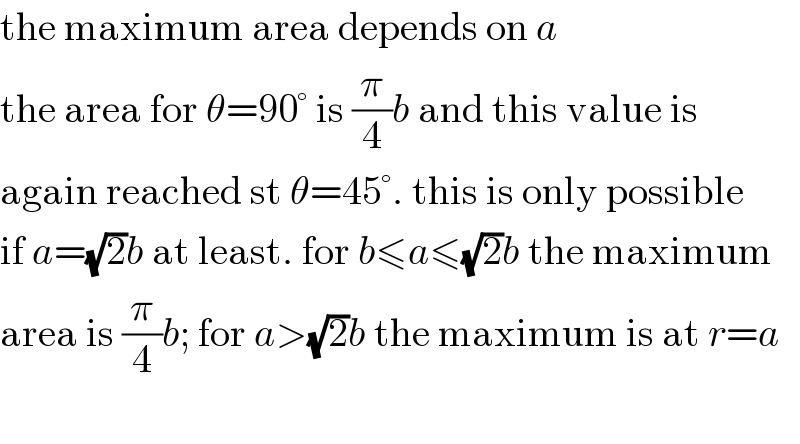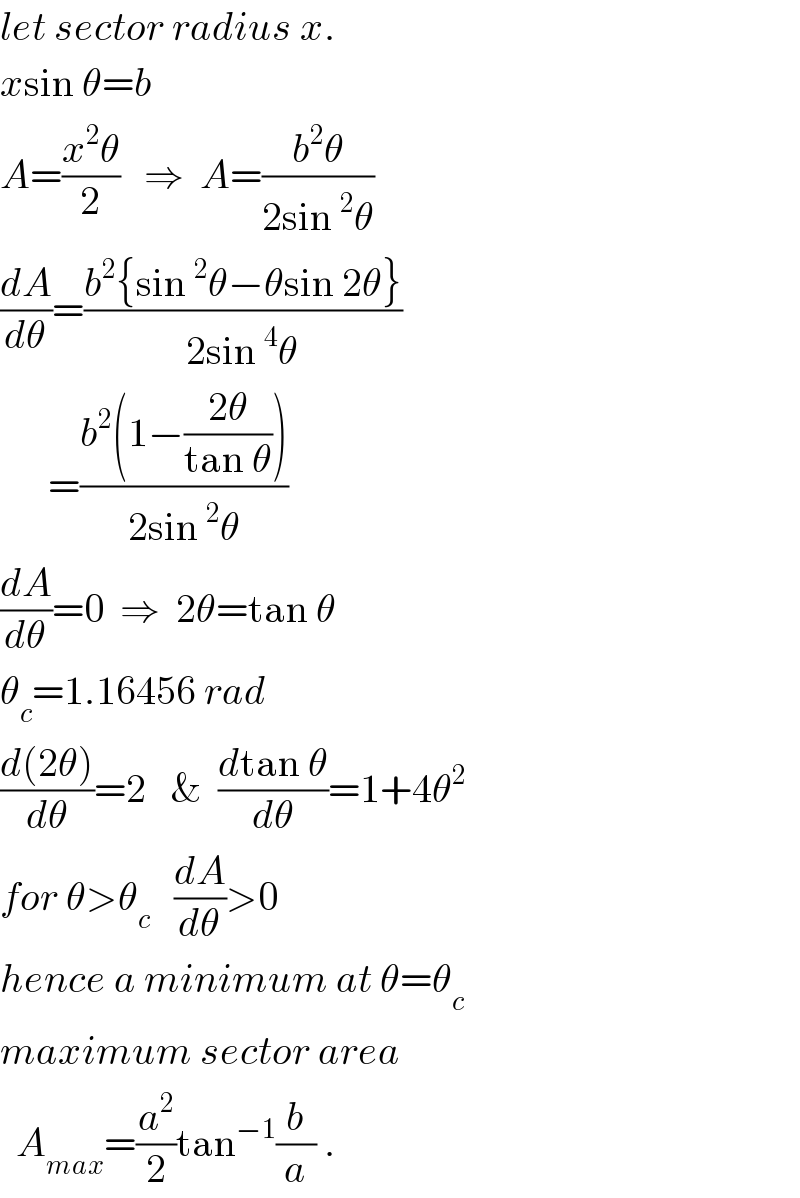
Question and Answers Forum
Question Number 71255 by ajfour last updated on 13/Oct/19

Commented by MJS last updated on 13/Oct/19

Commented by ajfour last updated on 13/Oct/19

Answered by ajfour last updated on 13/Oct/19

Commented by ajfour last updated on 13/Oct/19

